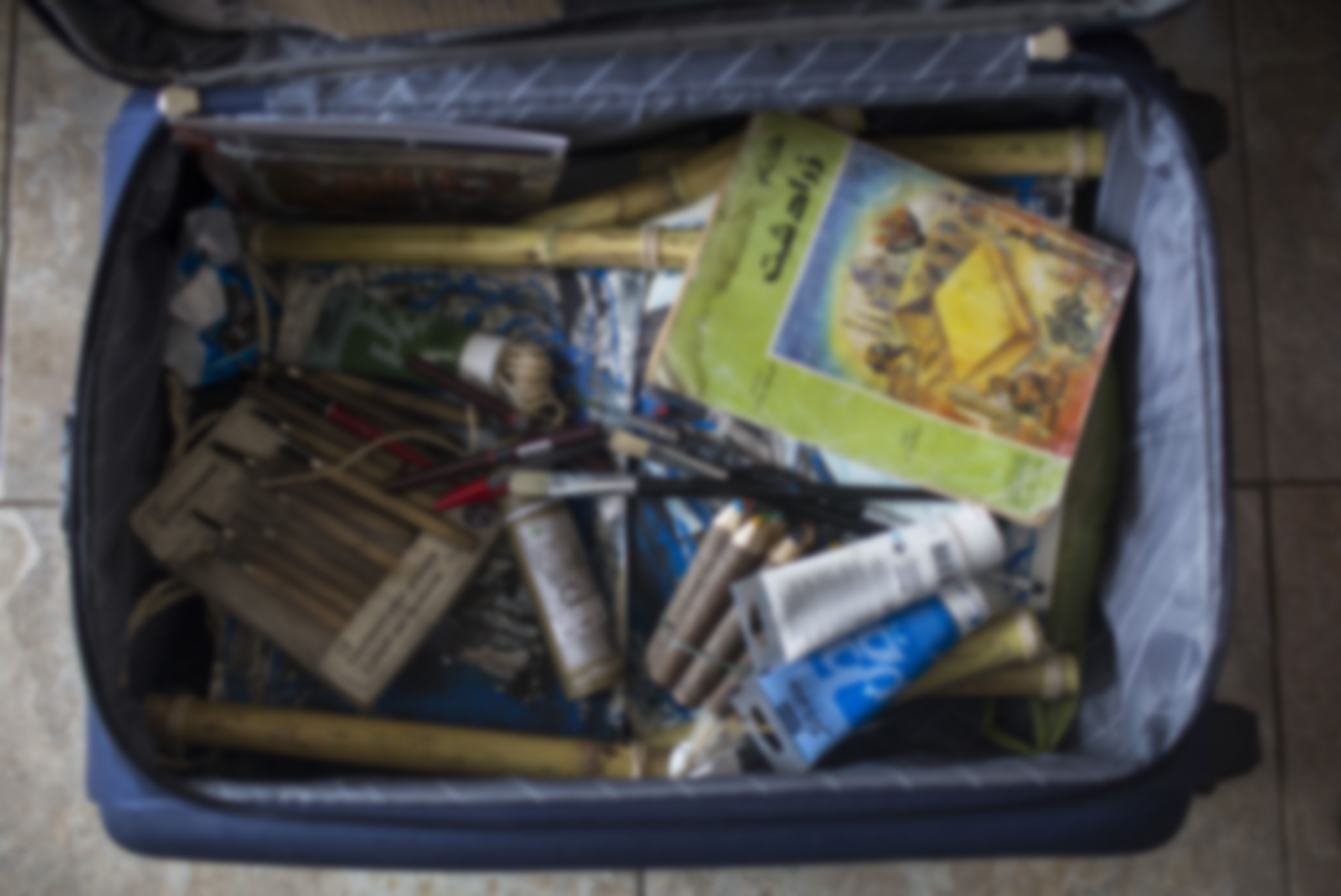Personal stories illustrate the sharp rise in global migration to Mexico, and the impact on the country’s two controversial borders.
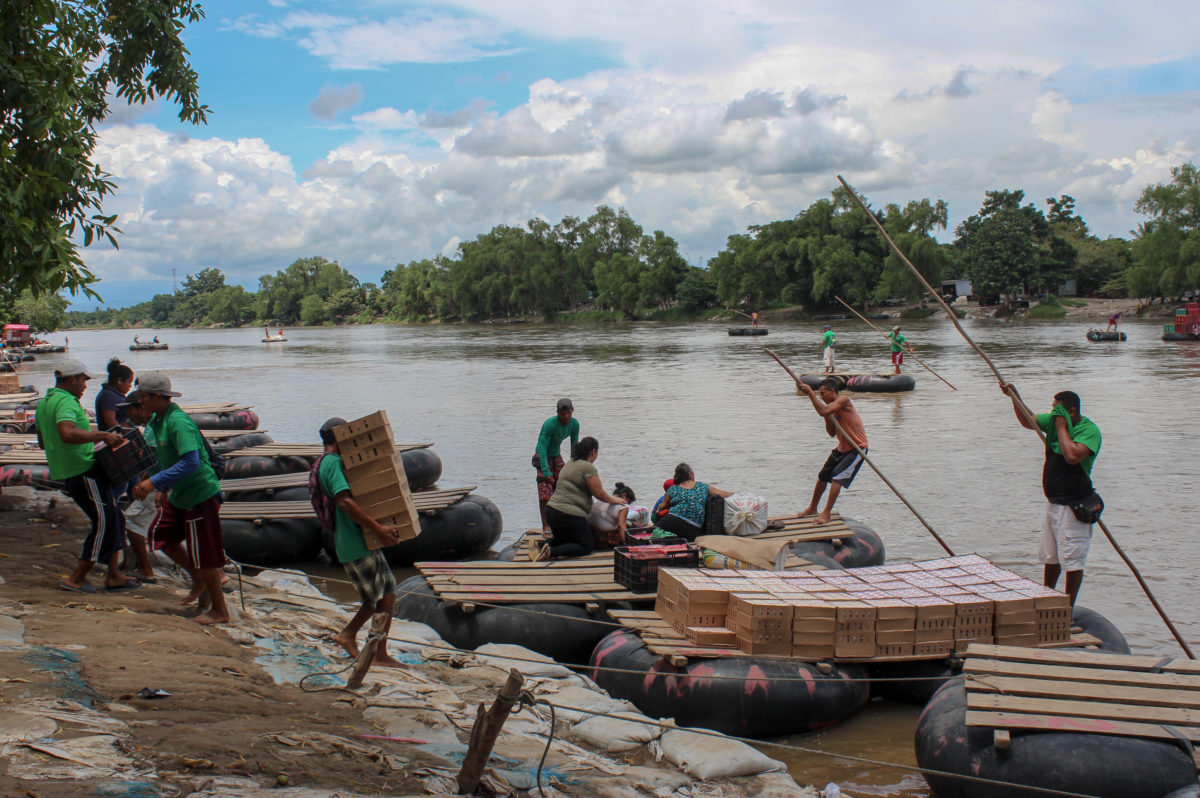
View from a river in Tapachula, Mexico's southernmost city, on August 08, 2017. Tapachula is located on the Mexico-Guatemala border. (Photo by Andrea Arzaba)
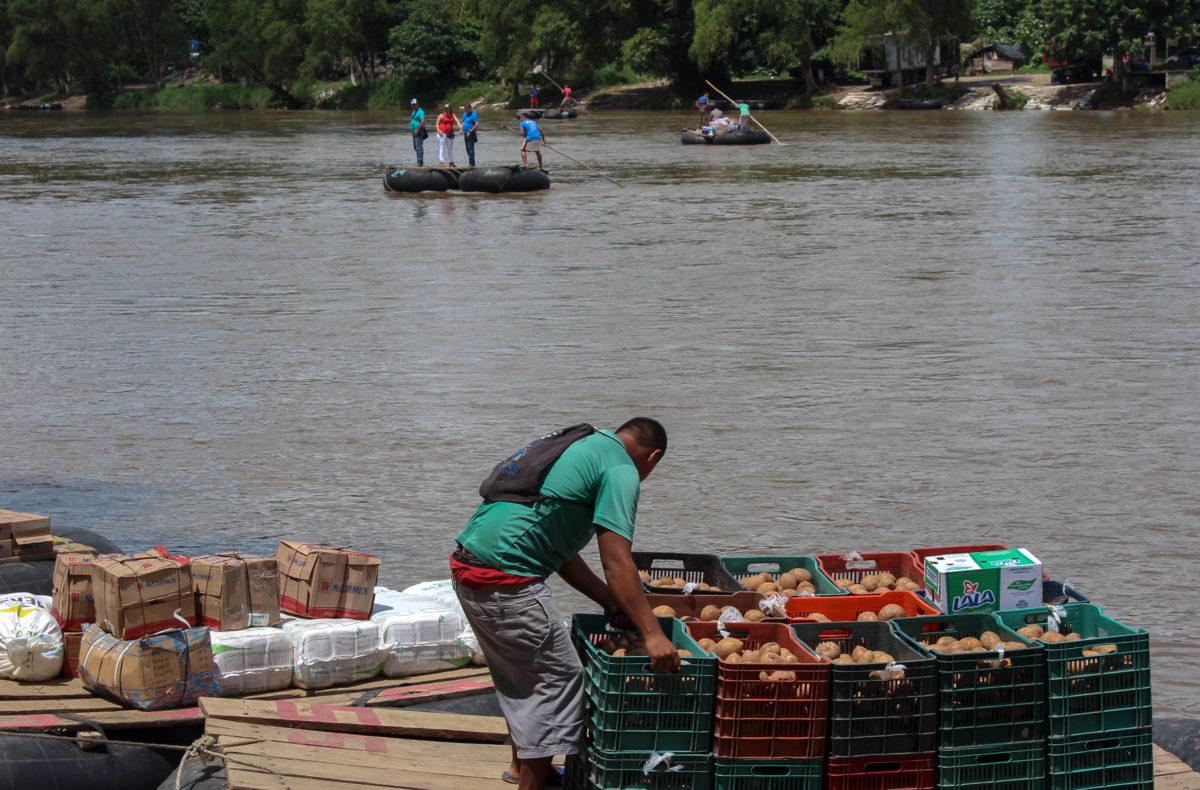
Alongside smuggled goods, such as eggs, milk, toilet paper, it is also common to see migrants from all nationalities using these “balsas” – or rafts – to cross the border in Tapachula, Mexico, on August 08, 2017. Many will continue their journey to Tapachula and beyond. (Photo by Andrea Arzaba)

Supplies stocked high in Ciudad Hidalgo, on the Mexican side of the border near Tapachula, on August 08, 2017. It's a bustling trade in unregulated commerce. Guatemalans come and shop here because their currency is currently stronger than the Mexican peso. (Photo by Andrea Arzaba)
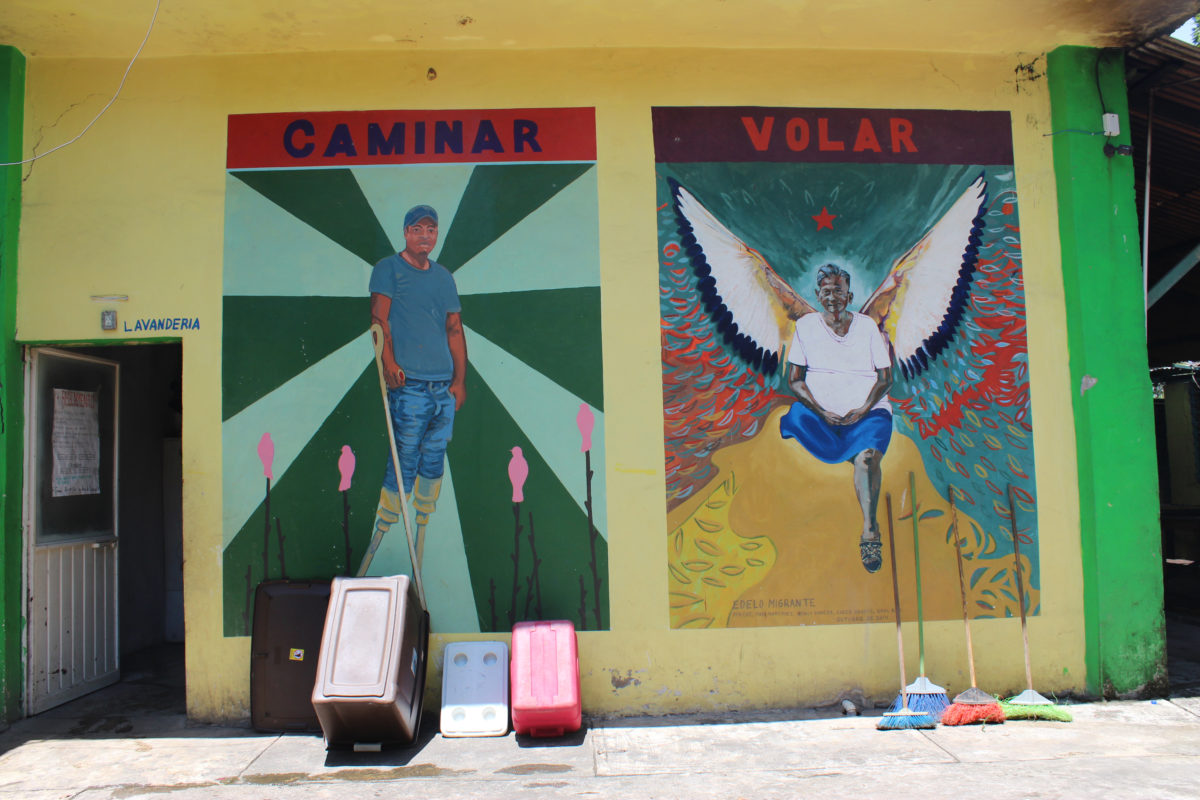
Murals adorn the walls of The Shelter Jesus the Good Shepherd for the Poor and Migrant, run by Doña Olga, in Tapachula, Mexico, on 08 June of 2017. These two images in the shelter portray migrants who have lost body parts, but who nonetheless “walk” (this migrant is wearing prosthetics) and eventually “fly”. (Photo by Andrea Arzaba)
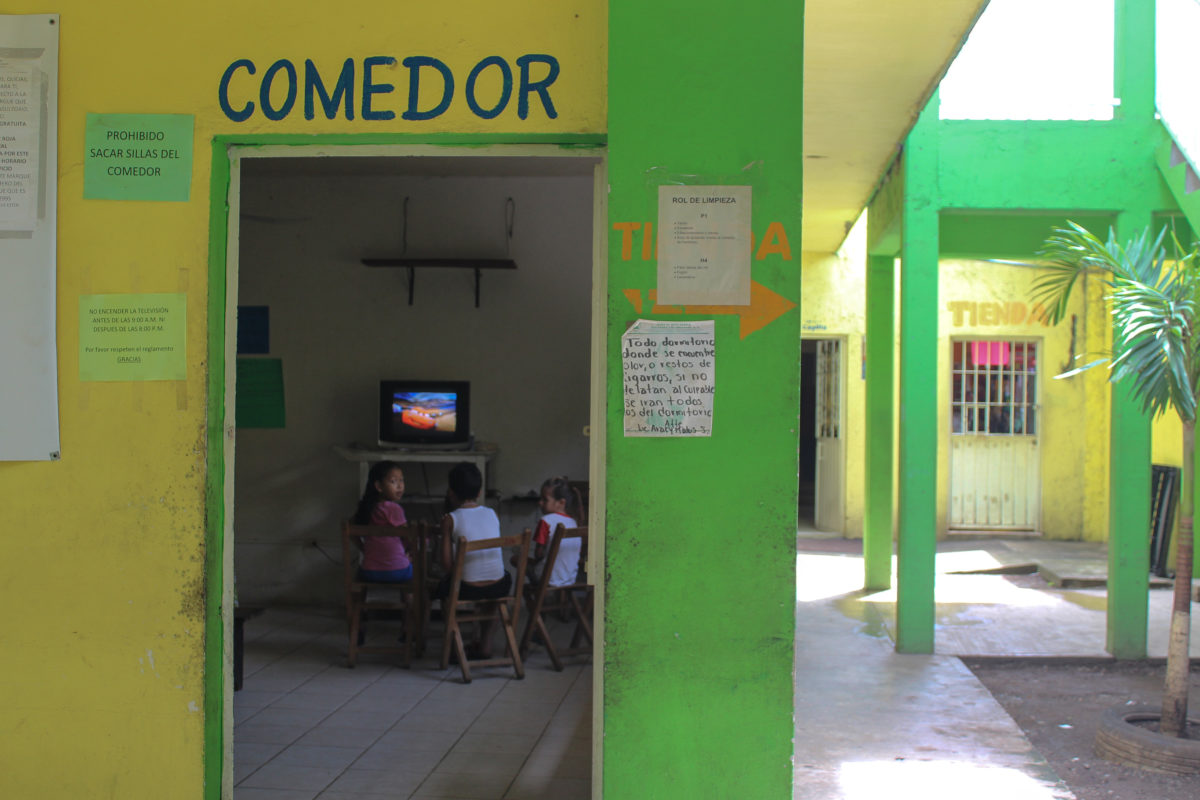
Children whose parents were injured as they travelled north watch TV in the dining room at Doña Olga’s shelter, the “Albergue Jesus El Buen Pastor del Pobre y Migrante” in Tapachula, Mexico, on 08 June of 2017. (Photo by Andrea Arzaba)
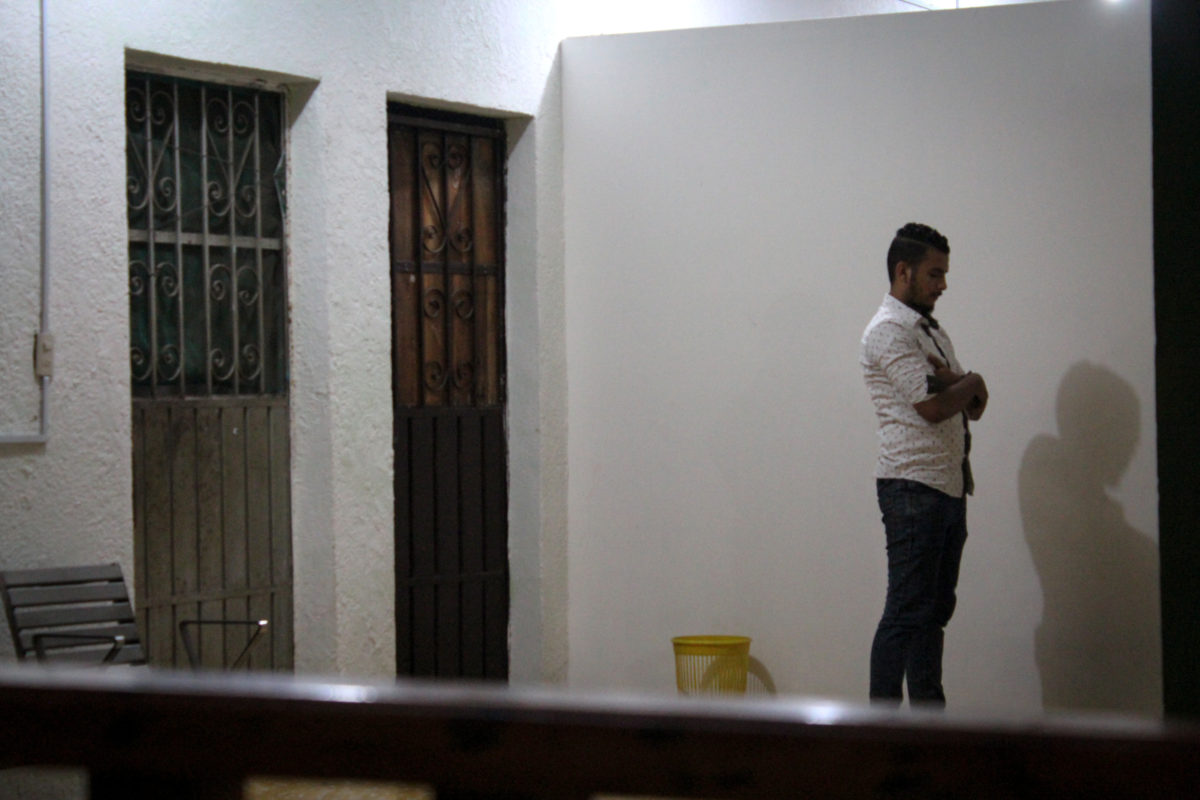
A migrant from Yemen prays at the hotel where he is staying in Tapachula, Mexico, on 07 June of 2017. The hotel charges $3USD a night is popular among migrants from all over the world. Migrants are key for many businesses in the city. (Photo by Andrea Arzaba)

African and Haitian migrants at the Emmanuel Christian Church in Tijuana, Mexico, on 23 March of 2017. It's an improvised shelter for all of wave of migrants that went through the border city. (Photo by Estefani Gonzalez)

Migrants living at the Juventud 2000 Shelter in Tijuana, Mexico, on 23 March of 2017. Father Chema ran the improvised shelter for the wave of migrants that went through the city. (Photo by Estefani Gonzalez:)
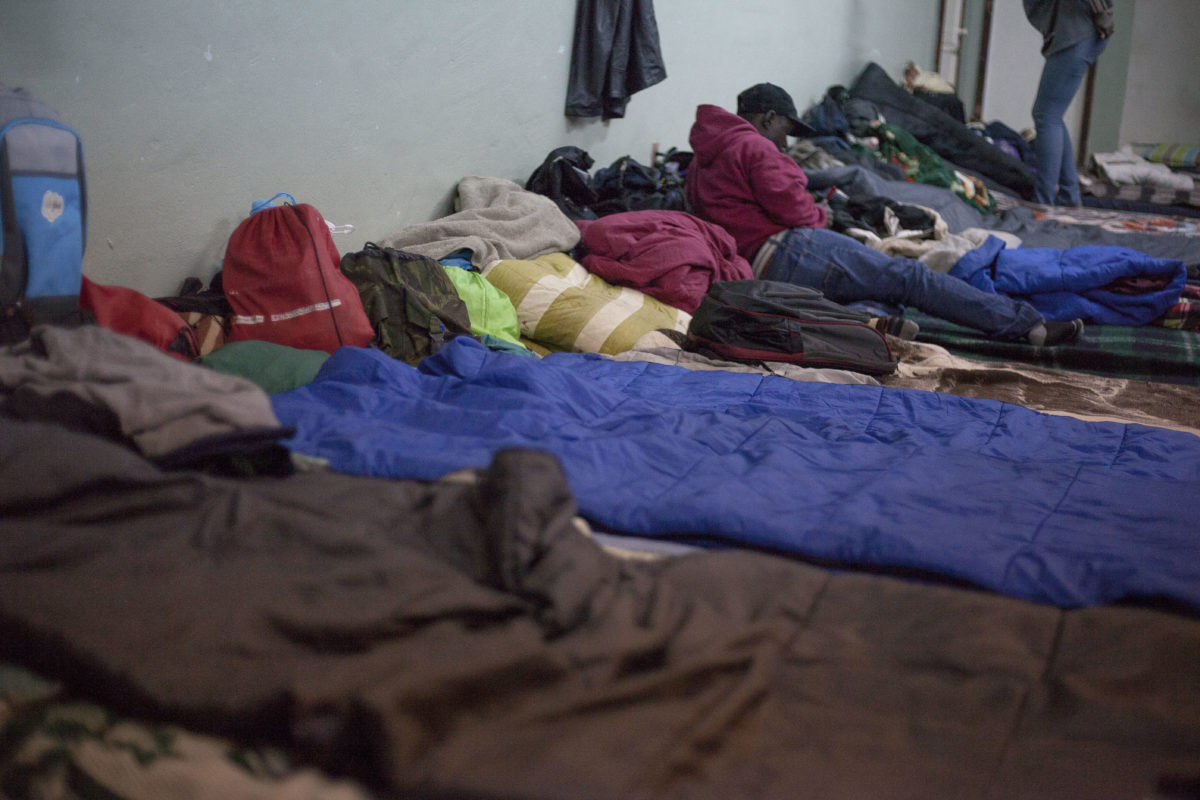
African and Haitian migrants stayed on the floor with sleeping bags and card boards at the Emmanuel Christian Church in Tijuana, Mexico, on 27 March of 2017.The shelter closed a couple of months later. (Photo by Estefani Gonzalez)

A Haitian child poses for a portrait at the Juventud 2000 Shelter in Tijuana, Mexico, on 26 March of 2017. (Photo by Estefani Gonzalez)
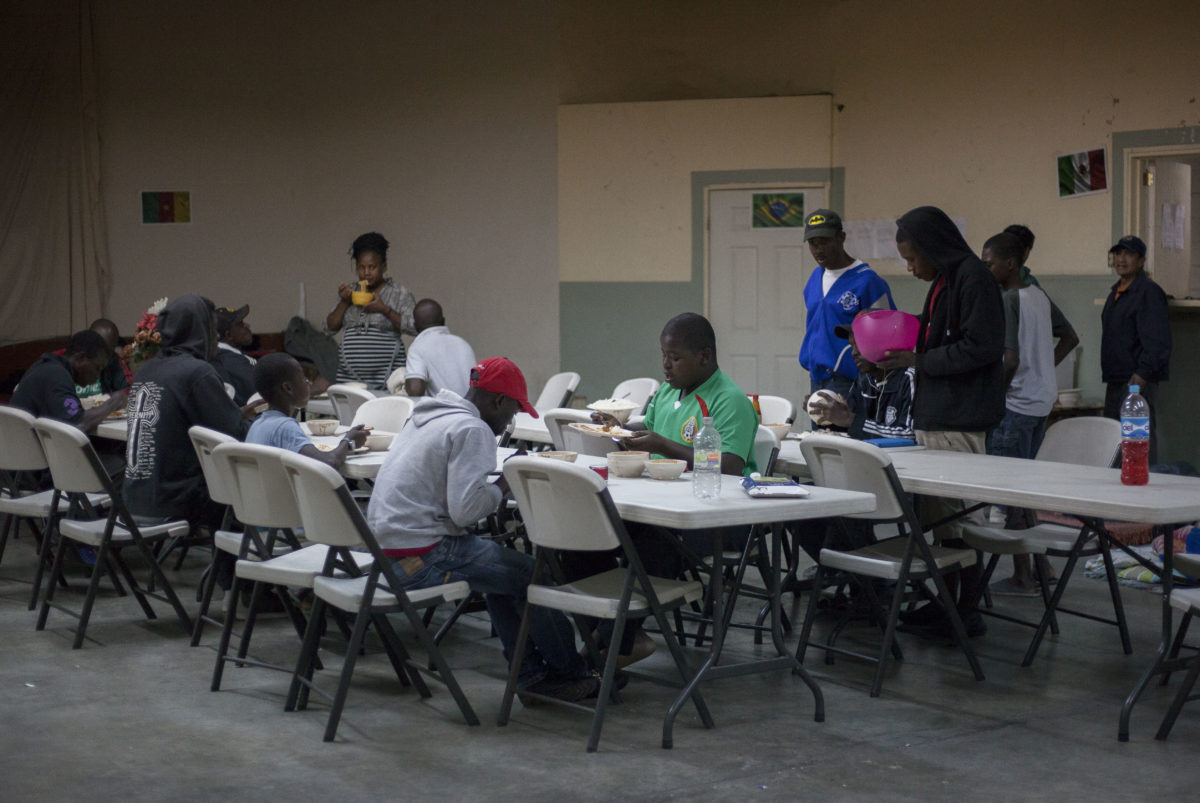
African and Haitian migrants at the Emmanuel Christian Church in Tijuana, Mexico, having dinner (Photo by Estefani Gonzalez)
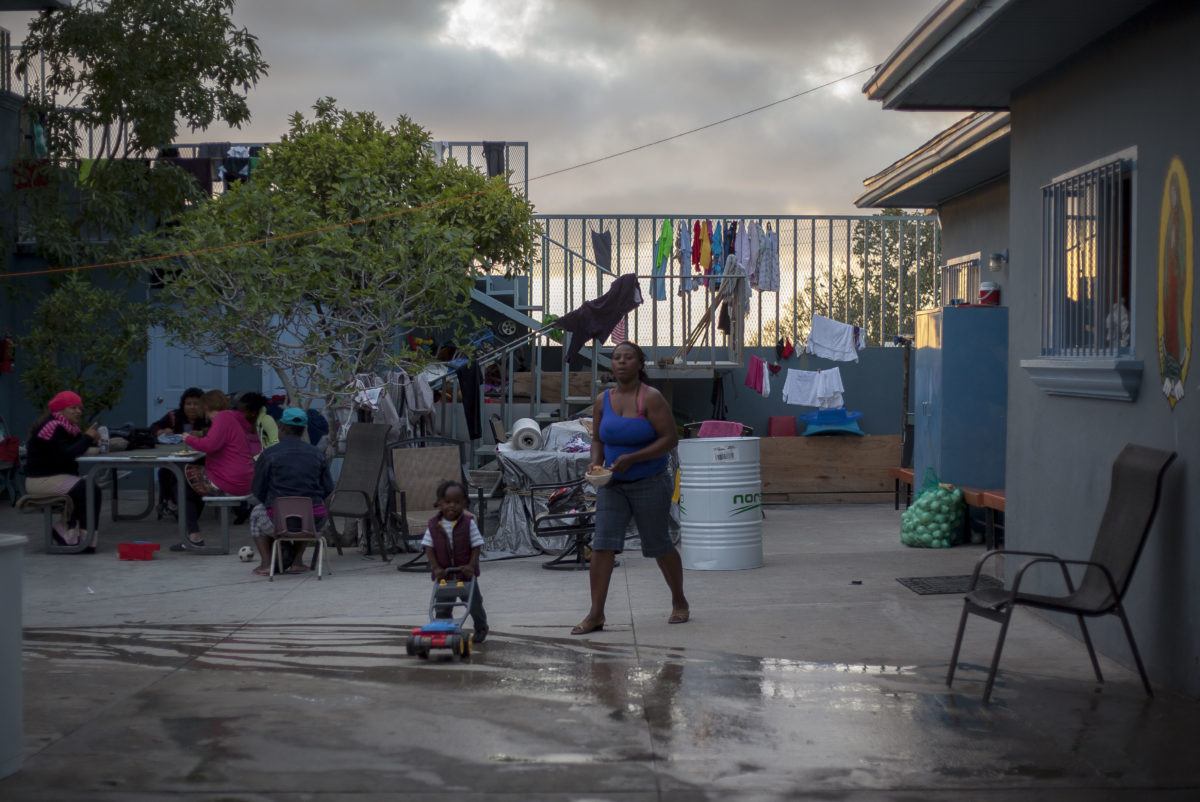
A mother and a child getting ready for bed, on 27 March of 2017, at the Emmanuel Christian Church (Photo by Estefani Gonzalez)
Tapachula: Mexico’s Forgotten Frontier
In a coffee shop in downtown Tapachula, Mexico’s southernmost city, Ali* recently sat and spoke calmly of life these days, thousands of miles from home on the eastern coast of Africa.
Ali was eloquent, punctuating his English with expressive eyes, and all the confidence of clean-cut business graduate of an Ethiopian university. He’s originally from Somalia, and explained the incongruity of now living – perhaps temporarily – in Tapachula, a Mexican city on the border with Guatemala. He described his harrowing, 6,500-mile journey to Mexico from Sao Paulo, Brazil. He was planning on going north, but the travel ban that was set against people from Somalia in the United States made him decide that Mexico would become his final destination.

View from a river in Tapachula, Mexico's southernmost city, on August 08, 2017. Tapachula is located on the Mexico-Guatemala border. (Photo by Andrea Arzaba)

Alongside smuggled goods, such as eggs, milk, toilet paper, it is also common to see migrants from all nationalities using these “balsas” – or rafts – to cross the border in Tapachula, Mexico, on August 08, 2017. Many will continue their journey to Tapachula and beyond. (Photo by Andrea Arzaba)

Supplies stocked high in Ciudad Hidalgo, on the Mexican side of the border near Tapachula, on August 08, 2017. It's a bustling trade in unregulated commerce. Guatemalans come and shop here because their currency is currently stronger than the Mexican peso. (Photo by Andrea Arzaba)

Murals adorn the walls of The Shelter Jesus the Good Shepherd for the Poor and Migrant, run by Doña Olga, in Tapachula, Mexico, on 08 June of 2017. These two images in the shelter portray migrants who have lost body parts, but who nonetheless “walk” (this migrant is wearing prosthetics) and eventually “fly”. (Photo by Andrea Arzaba)

Children whose parents were injured as they travelled north watch TV in the dining room at Doña Olga’s shelter, the “Albergue Jesus El Buen Pastor del Pobre y Migrante” in Tapachula, Mexico, on 08 June of 2017. (Photo by Andrea Arzaba)

A migrant from Yemen prays at the hotel where he is staying in Tapachula, Mexico, on 07 June of 2017. The hotel charges $3USD a night is popular among migrants from all over the world. Migrants are key for many businesses in the city. (Photo by Andrea Arzaba)
Ali said he became a migrant after his father and his brother were killed in a terrorist attack. Two years later, in Uganda, his migration was interrupted: he was abducted and tortured, and later managed to escape, first to Kenya and then Zambia. But after years of struggling to settle down, he gave up: he decided he had to leave Africa.
“I was desperate,” he said. “And someone that worked at the Brazilian embassy in Lusaka told me that for several thousand dollars he would expedite my visa faster. I took his offer, and he gave me a genuine visa, in days.”
Travelling alongside many other African and Asian migrants, Ali traversed three continents in an attempt to reach the United States.
After crossing Africa, he arrived in Latin America and “paid someone to find me a smuggler in Brazil. He charged me $600 to connect me to a network of smugglers that would take me all the way to Mexico,” Ali said, recalling that each smuggler belonging to the network picked him up in specific locations, sometimes with food and drink, and took him and other migrants to towns farther north.
All of the smugglers had his picture. Every time he was handed over to a new one, he paid between $20-600 – sometimes more for crossing rivers, bus rides, and payoffs to organized crime gangs, the military, and police and migration officers they encountered en route.
When they realize the situation they are in, some migrants try and turn back, but they are often forced by smugglers to continue with the journey. “In Peru I was caught by the police. Once in their offices, they asked me for money. Sixty dollars. I was refusing to pay and they told me that it was either my money or my freedom. I ended giving them all of my money,” Ali said.
Ali’s story is just one illustration of how smugglers ferry people across borders and between continents, taking advantage of migrants desperate to escape growing violence in their home countries. Smugglers in the Americas have staked claims on new business as old routes to Europe become increasingly difficult. Smugglers are profiting from migrants willing to take risks and who lack legal options to reach the United States or Canada. A better life, without the constant threat of violence, is worth the risks along thousands of miles of jungle trails and road in Latin America, migrants said.
On this trail, Tapachula is a growing crossroads on Mexico’s “other” border – the one often forgotten in the North American debate over immigration.
New arrivals are a commonplace in Tapachula, from Syria, Afghanistan, Ethiopia, Cameroon, Somalia, Bangladesh, India, Nepal, and Pakistan. They’re all in this “ciudad de paso” – pass-through city — mulling their next moves.
“They bring income to the city.”
Tapachula has become a bustling border town where migrants prop up an underground economy. Hotel owners charge migrants for well more than rooms to let, from help buying plane tickets, to handling wire transfers of money.
Late this summer, Ravi, a 25-year-old migrant from India, had been traveling for almost a year and held hope of making it to California, where family members have settled. He was staying in a very cheap and dark hotel downtown, near a string of Bangladeshi, Indian, Haitian, and Cuban restaurants that have popped up to serve new waves of migrants.
In order to pay for the smugglers that took him all the way to Tapachula, he relied on loans from his California family, and others in India. Remittances arrived every three or four weeks. As he spoke, he frequently checked his phone: “This is the most precious tool I have, it allows me to talk to tell my family I am safe,” he said.
A couple of blocks away, he introduced Sadek, a young businessman who opened a small “fonda”, or home-cooking restaurant called Bangladesh. The walls were green, next to a big outdoor patio. Sadek has lived in Tapachula since 2012. He understands Spanish perfectly, but speaks it haltingly. His lessons come “from Mexicans in the streets.” He asks some Bangladeshi clients if they want “rotti and yogurt,” which he translates as “tortilla y danone” to the cook. His restaurant has become a comfort place for Asian migrants. When some clients cannot pay, they eat on credit and keeps a ledger, noting what everyone owes him.
But life has not always been easy here, Sadek said. Every now and then a police officer hits him up for 50 pesos (about $2.50) to “take care of the restaurant” at night. He laughs, but he pays because as a security fee it’s not too much.
Sadek has decided to stay in Tapachula. He sees a good business opportunity here, and said he might even find a Mexican woman to marry.
Yadira de los Santos, the director of Migration and International Policy office, said Mexico needs to get a handle on the immigrant flow across its southern border. “We need a comprehensive analysis of how many migrants have crossed in the city, and from those, how many stayed in Tapachula.”
That will be a tall order: Tapachula is considered an easy destination for what seems to be an uncountable flow of migrants from around the world. All it takes to get here is a short trip across a river. Rides on rafts, sharing space with all manner of legal and clandestine merchandise, costs less than $5.
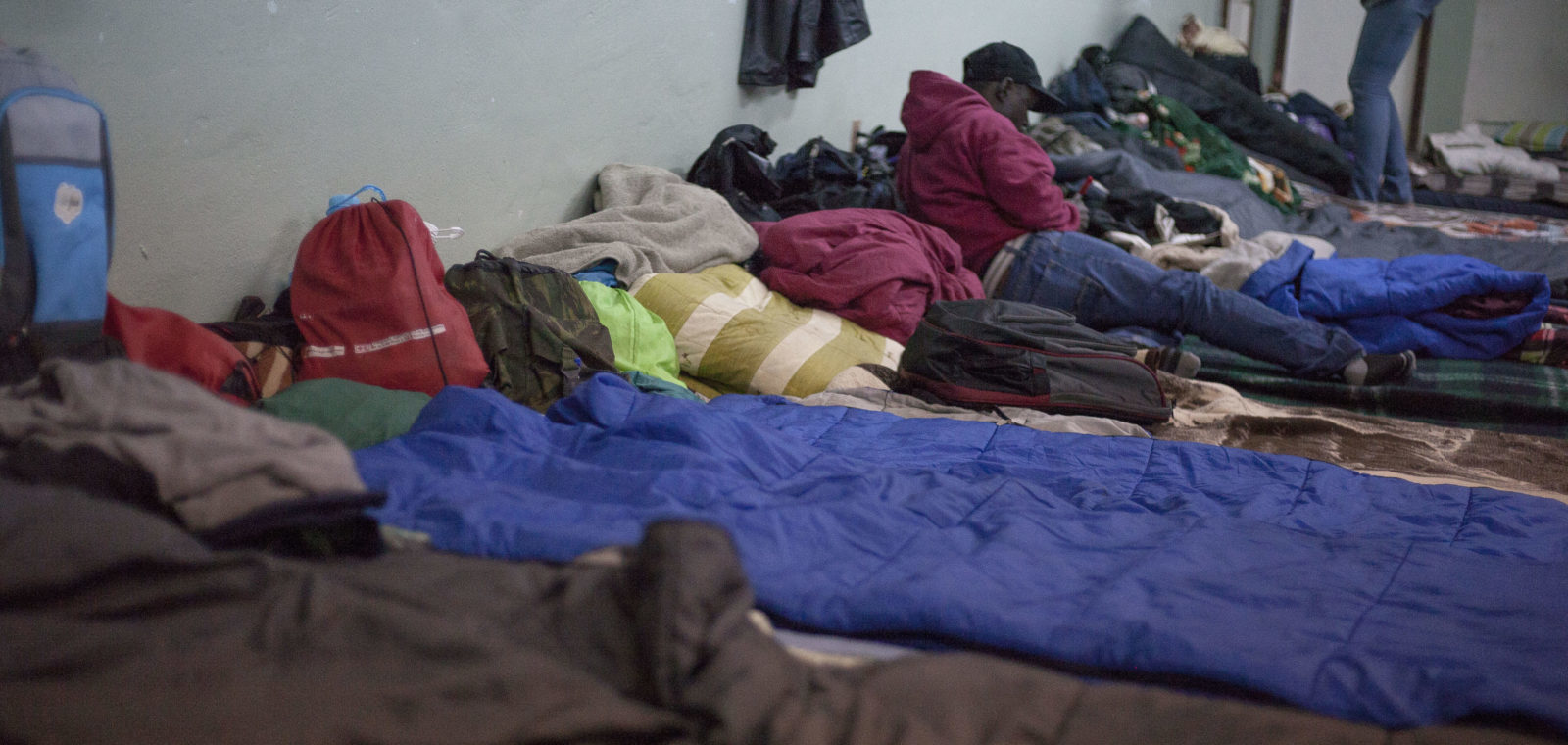
Tijuana: The City Of Migrants
Some 2,500 north of Tapachula, in the US-Mexico border town of Tijuana, Carol*, a 40-year old Ghanaian sits in a comfortable living room. She’s lived in Tijuana since December, 2016. With short hair and strong features, her voice is serene in contrast to a busy street outside. She says she left her country because of her religion. She hired smugglers across thousands of miles of jungles, mountains and rivers of South and Central America.
Laura Thompson, the deputy director general of the International Organization for Migration (IOM), says there are more women migrants today on the world’s migrant paths. Women once followed husbands or families. Today, in shelters and at border crossings, more and more educated women are moving, on their own, facing particular danger en route.
Carol’s journey to Tijuana was marred by lies, robbery and corruption.
After flying into Ecuador from Africa, Carol took a bus to the Colombian border. She then walked for more than a week, staying in improvised camps in the jungle of the Darien Gap, a roadless forest which was until recently partially controlled by the Revolutionary Armed Forces of Colombia (FARC). She was severely bitten by insects and a snake, but knew getting lost in the forest could mean losing her life. She was robbed on a number of occasions and gave up her cellphone in a mugging.
“I saw people dying on the road. Some were drowning in rivers; some fell from the high mountains. Just getting to Panama was not easy at all. [Even then] the Panamanians treated us like dogs. Sometimes we had to give them money, or our own clothes to be left alone,” she says, adding that some women migrants sold sex in exchange for food.
But now Carol is settling into a new life in Tijuana.
For generations, this bustling city of 2 million people, just across the border from San Diego in California, has attracted waves of migrants. Its proximity makes it ideal for those determined to make it in the U.S. But there are also long-established communities of former Russian, Chinese and Lebanese immigrants who instead decided to become Mexican. And, more recently, Mexicans and other Latin Americans deported from the U.S., have settled here.
Carol is among the would-be Mexicans. She says she’s here to stay. Her goal is working and making enough money to send for her two daughters. “ ’Tijuanenses’ have been very welcoming to me”, she says. “There are many foreigners in this town.”
She is not the only one. Asylum applications in Mexico have risen in recent years, with 8,781 applications in 2016. COMAR, the Mexican Commission for Assistance to Refugees, saw a 150% rise in asylum applications from November 2016 and March 2017, compared to the same period a year before, and predicts they could receive over 20,000 in 2017.
This spike may be due to the growing perception of the United States as inhospitable for migrants, even the documented ones, says Guillermo Alonso Meneses, a professor at the College of the Northern Frontier in Tijuana. “Many migrants have decided to stay in Mexico, and many others see Canada as a more welcoming place than the United States.”
Just in 2016, as many as 20,000 Haitians and African migrants are believed to have passed through the northern city of Tijuana, on the U.S.- Mexican border, according to the National Migration Institute, scores of them funneled through southern crossings in places like Tapachula and Tabasco.
“When it happened (thousands of migrants arriving to Tijuana’s migrant shelters), we had no support from the government. No funds, nothing,” says Father Canaveral, a Jesuit priest who runs a center supporting migrants. “If that happened again, we would not be ready.” While most wanted to reach the United States, others have stopped en route, like in Tijuana. Some fear a tougher immigration regime in the US. Others stayed, fearing that detention on the northward journey would lead to quick deportation.


African and Haitian migrants at the Emmanuel Christian Church in Tijuana, Mexico, on 23 March of 2017. It's an improvised shelter for all of wave of migrants that went through the border city. (Photo by Estefani Gonzalez)

Migrants living at the Juventud 2000 Shelter in Tijuana, Mexico, on 23 March of 2017. Father Chema ran the improvised shelter for the wave of migrants that went through the city. (Photo by Estefani Gonzalez:)

African and Haitian migrants stayed on the floor with sleeping bags and card boards at the Emmanuel Christian Church in Tijuana, Mexico, on 27 March of 2017.The shelter closed a couple of months later. (Photo by Estefani Gonzalez)

A Haitian child poses for a portrait at the Juventud 2000 Shelter in Tijuana, Mexico, on 26 March of 2017. (Photo by Estefani Gonzalez)

African and Haitian migrants at the Emmanuel Christian Church in Tijuana, Mexico, having dinner (Photo by Estefani Gonzalez)

A mother and a child getting ready for bed, on 27 March of 2017, at the Emmanuel Christian Church (Photo by Estefani Gonzalez)
The Overflow
For a time, Carol’s Tijuana home was the humble shelter at the Emmanuel Christian Church. The shelter was just a big patio and a large room at the pastor’s home, which Carol shared with some 70 men and women of all ages, including children, all using sleeping bags or cardboard boxes and blankets.
Through 2016, there were at least 10 shelters in Tijuana just for deportees from the United States and migrants wanting to cross the US-Mexico border. Most of the occupants were Latin Americans. Then, something changed. Alongside Guatemalans and Salvadorians were migrants from Africa, Asia and Haiti. There was a surge of nearly 20,000, mostly Haitian but also Africans and others, said Rodulfo Figueroa, the head of the National Migration Institute in Baja California. Shelters overflowed and migrants were found sleeping in the streets. Local churches rushed to set up more than 30 improvised shelters.
José María García, known as Padre Chema, coordinates the network Alianza Migrante Tijuana. In May 2016, a number of African and Haitian migrants were staying in tents in his backyard. “We realized that some people were staying in the streets, and we could not let that happen,” he says.
García, like others, said the Mexican government’s response has been inadequate.
Father Pat Murphy, director of the Casa del Migrante shelter, said “if we had to survive with the funds that the government gives us, we would have closed our doors a long time ago.” He said the government supplies about a quarter of Casa del Migrante’s annual budget. The rest is donated by international organizations and private donors.
Tijuana activist Adriana Reyna is a member of the Strategic Humanitarian Aid Committee, and has worked with migrants from Eritrea, Sudan, Congo, Ghana, Nigeria and Togo. She and colleague Soraya Vazquez believe migrants are victims of a corrupt system: failure of legislation to address the smuggling of migrants in many parts of the world allows smugglers and traffickers to operate with little fear of law enforcement.
And when they are arrested, Vazquez says, a failure to convince migrants to testify has left prosecutors toothless. Moreover, convictions for smuggling of migrants do not always lead to serious penalties.
Regardless how they’ve arrived, Reyna said she’ll work to make them feel welcome in Tijuana.
“These people are fleeing poverty and war, and we need to help them. After all, Tijuana is a city that was formed by immigrants too,” Reyna said.
Ali and Carol are pseudonyms used for security reasons.






